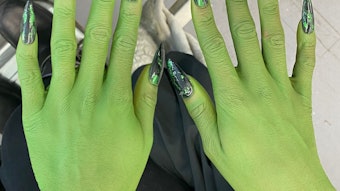
A successful business is partially reliant on a connected team—but this doesn’t happen naturally. You have to take steps to create an environment where sharing ideas and talking to one another on a regular basis is welcomed and celebrated. However, instilling open communication practices can be difficult when we’re all so busy. Over the years, we’ve implemented many systems at our salon to make sure that we stay in touch no matter how busy we get. Here, a few of the ones that we’ve forged. Try introducing them one or two at a time until they become a habit—then you can add some more!
1) Daily Check-In: Probably the easiest practice to start is simply checking in with your team every day. Your staff needs to know that you care about them, and checking in with them every day—even if only asking, “Is there anything I can do to help you today?”—gives you a chance to connect.
2) Huddle: Companies like Nordstrom and The Ritz Carlton start all of their shifts with a huddle. And if you’re familiar with football, then you’ll know that the team meets before each play in a huddle so everyone knows what’s about to happen. This concept works great in the salon world, too. The goal of having a huddle is to make sure that everyone is on the same page, so every day, our team comes together for a few minutes to do three things: look over the list of guests coming in that day, review our monthly goals and make any company announcements. If you keep track of daily sales, this is a good time to address your goals. Huddles should be short and shouldn’t turn into mini staff meetings. Any major issues should be addressed during larger team meetings or in a one-on-one meeting.
RELATED: Tussanee Luebbers on the Pitfalls of Lash Enhancements
3) Quarterly Reviews: Reviews are important, as they’re your best tool for coaching your team and helping them know what they need to do in order to “win” in your salon. These days, many small companies don’t hold reviews, and if they do, they’re performed annually. However, we’ve found that waiting a year to tell someone that they’re missing the mark is just too long to wait. It’s better to sit down with every team member, one on one, once every three months to go over how well they’re performing in the company. We also use this as a time to share any concerns management might have with a team member, for example unprofessional behavior or other issues that hurts the salon culture. By meeting four times a year, you can stay on top of issues and make sure that your team members are really in line with the salon’s goals. And, if after a couple of reviews you feel that you and a team member are moving in different directions, then you may need to part ways.
4) Team Meetings: One of our monthly highlights is our team meeting. We have a lot of fun in our meetings; we eat good food and hopefully walk away inspired. These monthly meetings typically last about three hours and have multiple purposes: to encourage, challenge, equip, empower and inspire. We celebrate our victories, birthdays and work anniversaries, and we reward team members for fun things like taking the best guest notes or posting the most content on their Instagram feed. We announce the employee of the month and go over our monthly team goals. Then, we work on education, for example, inviting a vendor to come in to talk about products we carry. Finally, we cast a vision for the salon in the future as well as get feedback from the team about how things are going. It’s always a good idea to get your team involved in shaping the company’s future, as they will then take more ownership of it. It’s easy to lose sight of the big picture when you’re stuck in a room working by yourself. Team meetings are a great tool to help keep your staff moving forward and inspired.
RELATED: How Lash Lifting and Tinting Help Your Clients and Boost Your Bottom Line
5) Feedback: Communication is not always about just getting your message out; it’s also important to hear thoughts from your staff. We employ a system of anonymous feedback, because sometimes a team member feels safer sharing her concerns anonymously. We keep a suggestion box in our break room, but there are also apps available, such as TinyPulse and 15Five, that you can use to get anonymous feedback from your team. (Note: Some apps have fees associated with their use.) Collecting anonymous feedback is a great tool as long as you take the criticism to heart. That means listening to the concern and then seeing if there’s anything you can do to fix it. Some things will be out of your control; others might be easy to fix. Ultimately, the goal is to create open communication to improve morale and business overall.
6) Digital Communication: There is one communication tool I highly discourage you from using: digital messaging. Texts and emails are a terrible way to communicate with your team. Yes, texting is a quick and easy way to communicate messages, but if they don’t have context, they can come off as cold and uncaring. How many times have you shared something via text or email, but because the receiver of the message can’t see your body language or hear your tone, the message comes off badly? Instead, communicate important information in monthly meetings, and if you have an emergency to address, do it in a team huddle. Using text or email can work for scheduling events or asking for time off, but when it comes to working through an issue or explaining a new policy, it’s imperative to communicate in person.
–by Paul Leubbers
[Image: Getty Image]
This story first appeared in the November/December issue of Eyelash magazine. To receive the magazine, click here to subscribe.











